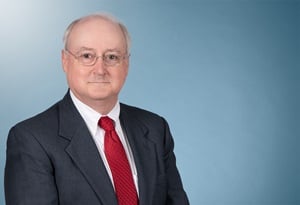Supreme Court Decides McCutcheon v. Federal Election Commission
On April 2, 2014, the U.S. Supreme Court decided McCutcheon v. Federal Election Commission, No. 12-536, holding that the aggregate campaign-finance contribution limits of the Bipartisan Campaign Reform Act (BCRA) are inconsistent with the First Amendment's free-speech guarantee.
BCRA places annual or per-election limits on the amount an individual citizen can contribute to any single political candidate or political committee (such as a national, state or local party committee or a political action committee). Depending on the recipient, these limits currently range from $2600 to $32,400 per year or per election. In addition to these "base limits" on the size of specific donations, BCRA also limits the total amount of an individual's aggregate political contributions—currently allowing a total of $48,600 for all contributions to candidates, and a total of $74,600 for all contributions to committees.
Shaun McCutcheon had contributed money to a number of political candidates and committees in amounts less than BCRA's base limits. He wished to donate to additional candidates and committees, but could not do so because he had already reached the aggregate contribution limits. McCutcheon filed suit, claiming that the aggregate limits violated the First Amendment. The district court upheld the constitutionality of the aggregate limits, concluding that they were necessary to prevent donors from circumventing the base limits and creating an appearance of corruption.
On direct appeal from the district court, the Supreme Court reversed by a 5-4 vote. A four-justice plurality declined to revisit the standard of constitutional scrutiny for campaign-contribution regulations, instead applying the "closely drawn" standard of Buckley v. Valeo. The plurality stated that the Court "has identified only one legitimate governmental interest for restricting campaign finances," which is preventing "quid pro quo corruption" or the appearance thereof. The plurality then concluded that contributions that comply with BCRA's base limits do not threaten to corrupt or apparently corrupt the candidate or committee that receives them, even if the donor exceeds BCRA's aggregate limits.
The plurality also concluded that the aggregate limits are not necessary to prevent donors from circumventing the base limits by directing large contributions to a candidate using other candidates or committees as conduits, stating that the potential methods for doing this "are either illegal under [other] campaign finance laws or divorced from reality." The plurality also found the aggregate limits to be "poorly tailored to the Government's interest in preventing circumvention of the base limits," because most of the additional contributions they ban likely are not circumvention attempts. The plurality rejected the government's argument that corruption or an appearance of corruption can be created by an individual's large aggregate contributions in "general, broad-based support of a political party."
Justice Thomas provided the fifth vote to invalidate the aggregate contribution limits by concurring in the judgment, expressing the view that Buckley should be overturned and additional campaign-finance rules should be struck down under the First Amendment.
Chief Justice Roberts announced the judgment of the Court and delivered the plurality opinion, in which Justices Scalia, Kennedy, and Alito joined. Justice Thomas concurred in the judgment. Justice Breyer dissented, joined by Justices Ginsburg, Sotomayor, and Kagan.
The material contained in this communication is informational, general in nature and does not constitute legal advice. The material contained in this communication should not be relied upon or used without consulting a lawyer to consider your specific circumstances. This communication was published on the date specified and may not include any changes in the topics, laws, rules or regulations covered. Receipt of this communication does not establish an attorney-client relationship. In some jurisdictions, this communication may be considered attorney advertising.


